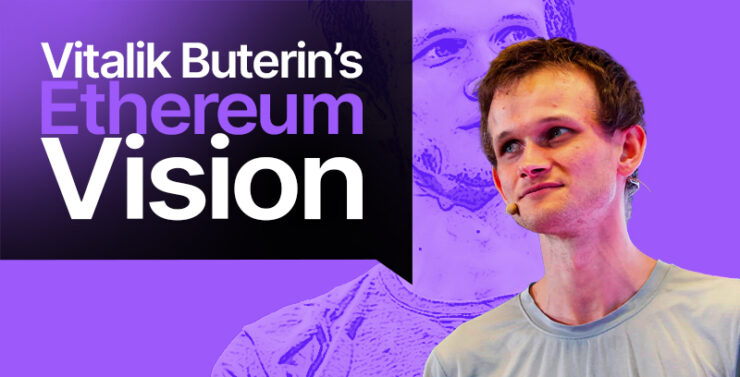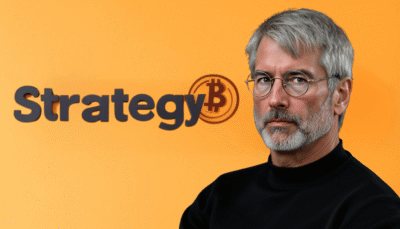In the summer of 2013, a 19-year-old programmer sat in front of his laptop, drafting a white paper that would change the course of cryptocurrency history. Vitalik Buterin, a Russian-born Canadian with a deep fascination for Bitcoin, believed the technology could do more than process digital transactions. He imagined a decentralized world where applications could run without intermediaries, governed by smart contracts on an immutable ledger. That document laid the foundation for Ethereum.
By 2015, Ethereum went live, and its impact was immediate. Unlike Bitcoin, which was limited in functionality, Ethereum introduced a programmable blockchain—one that could host decentralized finance, smart contracts, and applications spanning industries.
Eight years later, Ethereum remains the second-largest cryptocurrency by market capitalization, a testament to Buterin’s vision and technical ingenuity. His influence does not end with Ethereum’s development as he is an outspoken voice on social media, an advocate for decentralization, and a philanthropist whose donations have reached into the billions.
Vitalik Buterin’s Early Years and the Birth of Ethereum
Born in Kolomna, Russia, in 1994, Buterin emigrated to Canada at the age of six. His talent for mathematics and programming became evident early, landing him in gifted education programs. He was drawn to Bitcoin as a teenager and quickly made a name for himself by co-founding Bitcoin Magazine in 2011. Writing for the magazine gave him a front-row seat to the evolving world of cryptocurrencies. But instead of simply covering it, he saw limitations in Bitcoin’s design—limitations he wanted to fix.
His solution was Ethereum. Buterin envisioned a blockchain that could execute complex operations beyond simple transactions. The Ethereum white paper proposed a decentralized platform that could run self-executing contracts, eliminating the need for traditional middlemen. By 2014, he had assembled a team of co-founders, including Gavin Wood and Charles Hoskinson, and secured funding through one of the earliest initial coin offerings (ICOs). When Ethereum launched in 2015, it was more than just another cryptocurrency—it was an entirely new ecosystem.
The Ethereum Revolution
Ethereum’s introduction of smart contracts reshaped the blockchain landscape. These digital agreements, embedded in code, could execute themselves when conditions were met, reducing reliance on banks, lawyers, or financial intermediaries. The platform quickly became the foundation for decentralized finance (DeFi), allowing users to trade, lend, and borrow assets without traditional gatekeepers. Non-fungible tokens (NFTs), which exploded in popularity in 2021, also originated from Ethereum’s framework, enabling artists and creators to monetize their work in new ways.
But Ethereum faced challenges. High transaction fees, network congestion, and energy inefficiency led to criticism. Buterin responded with one of the most ambitious upgrades in blockchain history: Ethereum’s transition from proof-of-work to proof-of-stake. In September 2022, the network completed “The Merge,” slashing its energy consumption by 99.95%. It was a defining moment, cementing Ethereum’s role as a leader in blockchain innovation while addressing sustainability concerns.
The Power of Social Media and Influence
While Buterin remains deeply involved in Ethereum’s development, his influence extends far beyond technical contributions. With over 5.7 million followers on X, he has become one of the most prominent voices in the crypto community. His posts, often filled with technical insights, market observations, and philosophical reflections, can sway investor sentiment and shape industry trends.
His presence on social media has not been without risks. In 2023, hackers compromised his X account, using it to promote a scam that led to over $691,000 in stolen funds. The incident underscored the vulnerabilities high-profile figures face in the digital age. Yet, even after the hack, his influence remained undiminished. When he speculated in 2024 about Ethereum’s relationship with the Shiba Inu (SHIB) token, the post triggered market fluctuations, proving how closely traders and developers watch his words.
Buterin is not an isolated figure in the crypto world. He frequently engages with influential thinkers, bridging the gap between technology, economics, and governance. His discussions with economists like Tyler Cowen, Lex Fridman and Noah Smith have explored the broader implications of blockchain technology, while his collaborations with Glen Weyl on decentralized governance models have introduced innovative funding mechanisms like quadratic voting.
His influence extends beyond the financial sector. In a 2023 interview, artist and musician Grimes referred to Buterin as a “philosopher king,” emphasizing his ability to blend technical expertise with grand societal visions. He has also worked with Naval Ravikant and Haseeb Qureshi, debating the future of decentralized governance and blockchain ethics. In these conversations, Buterin emerges not just as a developer but as a thought leader guiding the crypto industry’s philosophical evolution.
Philanthropy and the Future of Ethereum
Buterin’s success has brought immense wealth, but he has channeled much of it into philanthropy. In 2021, he donated over $1 billion in cryptocurrencies, including Shiba Inu tokens, to India’s COVID-19 relief efforts. The contribution was one of the largest single charitable donations made in cryptocurrency. His philanthropic reach extends to animal welfare as well—he donated approximately $294,000 to a zoo in Thailand to support the care of a baby pygmy hippopotamus named Moo Deng.
Even as Ethereum continues to evolve, Buterin remains its guiding force. His current focus is on scalability solutions, quantum resistance, and governance models that balance decentralization with security. His proposals for Layer 2 rollups and sharding aim to increase Ethereum’s transaction throughput, ensuring the network can handle mass adoption without sacrificing efficiency.
Buterin has also cautioned against blind political allegiance in the crypto space. He has warned against supporting politicians solely based on their pro-crypto stance, emphasizing that blockchain should align with principles of decentralization, internationalism, and individual freedom rather than partisan interests.
Ethereum’s future remains intertwined with Buterin’s vision. As new competitors emerge and regulatory scrutiny intensifies, his leadership will continue to shape how blockchain technology integrates with global finance, governance, and social structures. Whether through technical innovation, public discourse, or philanthropy, Buterin’s influence remains undeniable.





